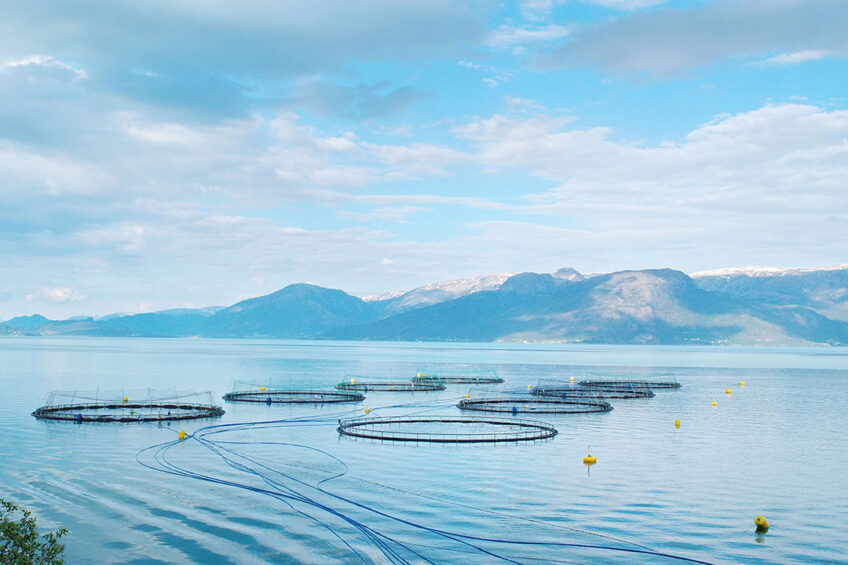Risk assessment tool for feed ingredients in salmon sector

Moves to improve visibility into supply chain in the salmon sector have taken a step forward with the launch of a first of its kind environmental, social, governance (ESG) risk assessment tool for feed ingredients.
The venture, established by Global Salmon Initiative (GSI) and the World Wildlife Fund (WWF), will not only support the salmon industry but believe the wider animal protein production sectors, including livestock, may also benefit.
Salmon aquaculture: Fasting growing sector
It comes at an important time for the fast-developing salmon sector. Salmon consumption, according to a recent report, is 3 times higher than it was in 1980. Globally, 70% of salmon are now farmed, making salmon aquaculture the fastest growing food production system across the globe. The recent FAO 1.5 degrees roadmap forecasts a 75% increase in sustainable aquaculture by 2040, though “sustainable” remains to be defined. Pests and diseases have troubled the sector in recent years.
Welfare violations
An investigation by Animal Equality last year found several salmon welfare violations in offshore Scottish farms with animals being mishandled, improperly stunned and left to suffocate. Around 16.5m farmed salmon died in sea pens in Scotland last year – triple the 2020 figure. The estimated cost of salmon mortalities between 2013 and 2021 was USD$15.5bn, with the top 10 salmon producers responsible for 100m salmon deaths and escapes.
Feed supply chain
The tool provides a consistent and aligned framework for farming companies to engage with their respective feed suppliers in order to get a holistic overview of possible risks in the feed supply chain. These could include, for example, biodiversity loss, climate change, resource use, environmental footprint, health and welfare, nutrition, human rights and governance.
Data collection
It can also help companies assess the scalability of future novel ingredients and it follows a 3-year consultation period with GSI member, WWF and industry feed companies. It is the first time a common methodology is available to support greater alignment in feed data collection.
Feed sourcing main sustainability challenge
Commenting on the tool, Daniel Miller, aquaculture specialist at WWF, said feed sourcing remained on of the main sustainability challenges in salmon farming and food production more broadly: “The surprising amount of unknown information in feed-ingredient supply chains leaves the sector open to unintentional risks and vulnerabilities – even for companies prioritising sustainable, ethical production.
“With this tool, GSI members are taking a proactive approach to address these risks and identify opportunities to improve the supply chain. Looking at supply chains broadly and holistically doesn’t just mitigate risk; it also facilitates more informed and strategic decisions.”
Potential for tool to be used in other sectors
Miller said the tool could be used across animal protein and even pet feed sectors that share many of the supply chains and risks, adding that the charity would now be working with other partners to expand its use.
Transparency & traceability in supply chains
Tor Erik Homme, Grieg Seafood director of food and nutrition, said there needed to be an improvement in the level of transparency and traceability in supply chains, so that feedback and assurances could be provided to customers, regulators, communities or long-term investors that sourcing was taking place from responsible sources.
By developing a common tool so producers can all ask the same questions of the supply chain which will streamline requests and improve the level of traceability, ultimately supporting accelerated improvements in the sustainability of the ingredients being used for feed
Tor Erik Homme, Grieg Seafood director of food and nutrition
Sourcing feed ingredients from diverse supply chains makes it challenging to identify and mitigate all the current and potential ESG risks of our global operations. We’ve made significant progress over the past few years in addressing many of these risks, but we have more work to do and our pace needs to accelerate. We support the implementation of the ESG tool because it will help us better identify what we know and what we don’t know about the impacts of certain ingredients, and in addressing these concerns, we will increase the transparency in our sourcing and ultimately improve our performance.
Jorge Diaz Salinas, Skretting sustainability manager
The tool has the backing of the Aquaculture Stewardship Council, which intends to incorporate it as one of its due diligence mechanisms as part of the ASC Feed Standard certification process.
In addition to the tool, WWF, GSI and Grieg Seafood have released a business case, Feed of the Future: Transparent and Traceable”, which looks at the challenges inherent in feed production, the development of the tool and Grieg Seafood’s experience applying it to their supply chain. The paper can be found – Feed of the Future: Transparent and Traceable | Publications | WWF











